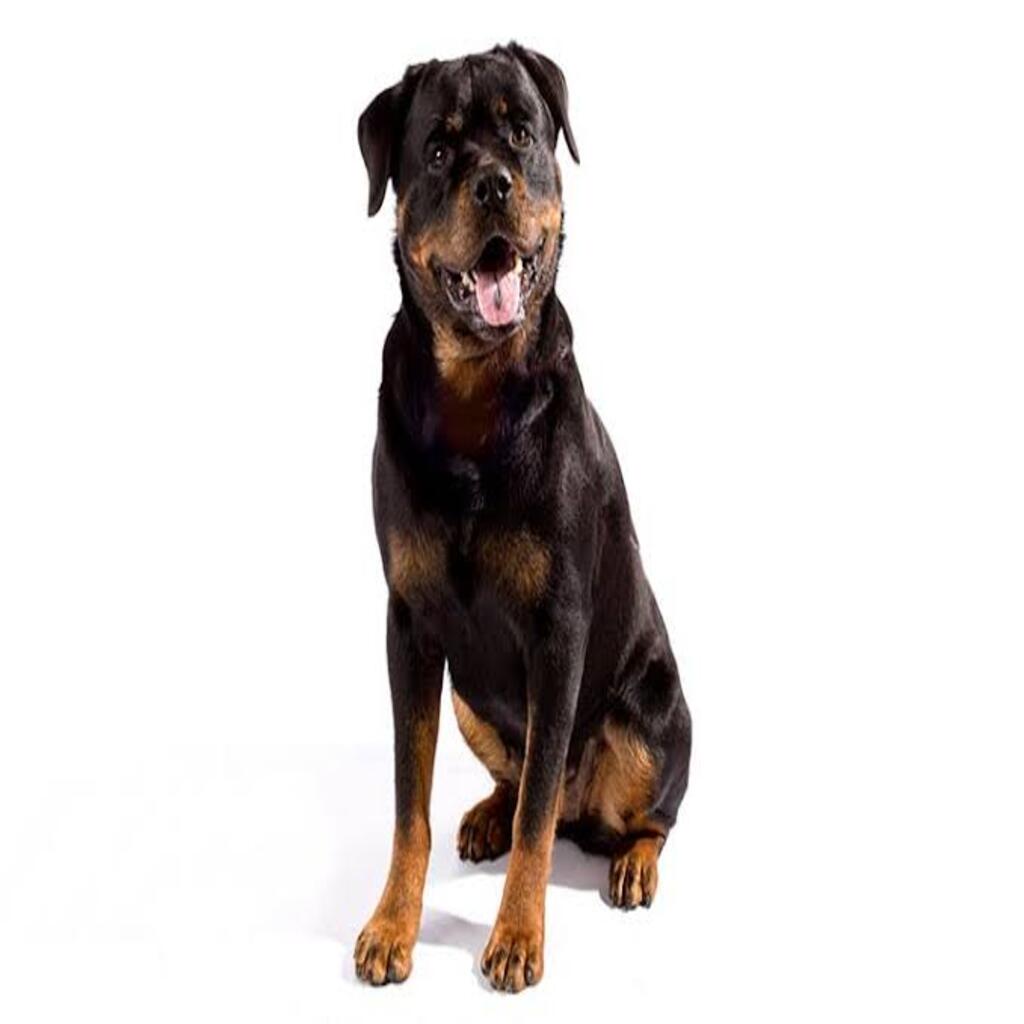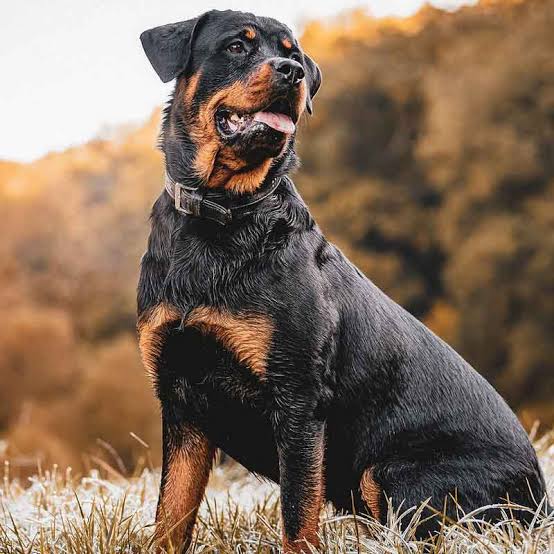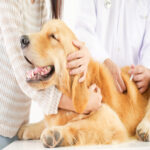
Image Credit – Hemapriya
Strong, confident, and deeply loyal, the Rottweiler is a breed that commands both respect and admiration. Originally bred to herd cattle and pull carts in Germany, this muscular and intelligent dog has evolved into a trusted family protector and service animal. Known for their striking black and tan coat and powerful build, Rottweilers are far more than just guard dogs—they’re affectionate, obedient, and thrive on companionship. When properly trained and socialized, the Rottweiler can be an incredibly loving and dependable member of any household. In this post, we explore what makes this breed so unique and beloved around the world.
The Rottweiler is a dog of many talents: he’s rough and tumble, ready for anything; easy to train, if treated with respect and consistency; loyal and protective, at times to a fault; strong, yet gentle; aloof and dignified with strangers and playful and loving to his family. In short, the Rottie is the typical “tough guy with a heart of gold.”
The Rottweiler

This steadfast canine soldier developed from the Molossus dog of Italy, a Mastiff-type dog bred to fight lions in Roman amphitheaters and serve the army in its campaigns. The progenitors of the Rottie traveled with the conquerors, driving and protecting cattle that fed the warriors on their long and arduous treks through inhospitable terrain. Dogs often stayed behind as the armies pressed on, breeding with the native canines and producing working dogs suited to particular climates, conditions, and occupations.
The Romans crossed the Alps into southern Germany in the First Century on the road to conquering all of Europe. The Romans established the town of Arae Flaviae as a fortified cultural and administrative center. The red-tiled roofs of the most important buildings gave the village its German name, Rottwil (red villa), later changed to Rottweil. The town grew in importance, and by the Middle Ages, it was a bustling center of commerce and justice. Cattlemen used the descendants of the Roman dogs to bring the herds to the butcher for sale and to guard their purses of money on the way home, and the butchers in turn used the dogs to pull the carts carrying the meat. The butchers developed a larger strain of dogs for draft work, but it is the smaller herding-type Rottweilers that are most popular today.
Eventually, donkeys replaced Rottweilers as city cart draft animals. The growing prominence of the railroad for shipping freight as well as transporting people led to the outlawing of cattle drives through German towns. Since dogs were prized more for the work they did than the companionship they provided, Rottweilers declined in population; in 1900, only a single Rottie bitch was recorded in all of Rottweil.
The breed’s resurgence began a few years into the 20th Century when Rotties were recognized as potential police dogs for their intelligence, loyalty, and strength. The rest is history. In 1921, after several years of squabbles among fanciers, the Allgemeiner Deutscher Rottweiler Klub formed with the motto “Rottweiler breeding is working dog breeding.” No Rottweiler can have a German championship without first proving his mettle as a working dog.The Rottie came to the US with a German emigrant, probably in the late 1920s. The first litter was whelped in 1930, and the first dog registered by the American Kennel Club in 1931.
The original stock in this country came from Germany, but breeding requirements in the US were not as strict as in the homeland. The breed marked time until after WWII, when it began a steady rise in popularity as an obedience dog. In more recent years, German-bred dogs have achieved a level of attention as more Rottie owners get involved in Schutzhund or protection work with their dogs. German breeders still insist on working ability in their dogs and championships are withheld if the dog cannot prove himself in the field as well as the show ring.
Popularity in the US accelerated puppy production and caused health and temperament problems in the breed, but bad publicity and a general downturn in the preference for big guardian breeds has caused a turn-around. Rottweiler registrations numbered in the hundreds in the late 1940s, peaked above 100 thousand per year in the mid-1990s, and dropped to 37,355 at the end of the decade. Today, the breed ranks eleventh in popularity of AKC’s 148 breeds, down from second a few years ago. Litter numbers are on the decline as well; the breed ranked sixteenth in 2000 with 13,089 litters registered.
Physical appearance
The Rottweiler is a large dog, with males ranging from 24-27 inches at the shoulder and females from 22-25 inches. Weight ranges from 80-110 pounds. The dog is slightly longer than it is tall with a large frame balanced by a deep, broad chest and heavy muscling. Rotts are always black with clearly delineated rust or mahogany markings over the eyes, on the side of the muzzle, and on throat, chest, and lower legs. The tail is docked short and carried at or slightly above horizontal as an extension of the level back.
The Rottie coat is smooth and short with an undercoat present on the neck and thighs. Wavy or curly coats are faulted and long coats are disqualifications for breeding and the show ring.
The Rottweiler in motion is a picture of power and stamina with strong reach in front and forceful drive in the rear. A well-conditioned Rott is a superb athlete; he trots with great stamina and seemingly little effort – an efficiency of movement inherited from his days as a cattle drover.
It is in breed temperament that the Rott is often misjudged. A well-bred Rottweiler is calm, confident, and courageous with an inherent aloofness towards strangers and a reserved attitude in new situations. Combined with his fierce devotion to home and family, these characteristics can be subverted from their original purpose by poor breeding practices, lack of socialization, and failure to teach basic good manners. Rottweiler owners without a strong grasp of the breed’s nature can find themselves in trouble if the dog has been badly bred or assumes leadership of the family.
Temperament
The Rottweiler standard is clear in regard to temperament: “The behavior of the Rottweiler in the show ring should be controlled, willing, and adaptable, trained to submit to examination of the mouth, testicles, etc. An aloof or reserved dog should not be penalized, as this reflects the accepted character of the breed. An aggressive or belligerent attitude towards other dogs should not be faulted.
“A judge shall excuse from the ring any shy Rottweiler. A dog shall be judged fundamentally shy if, refusing to stand for examination, it shrinks away from the judge.
“A dog that in the opinion of the judge menaces or threatens him or exhibits any sign that it may not be safely approached or examined by the judge in the normal manner shall be excused from the ring. A dog that in the opinion of the judge attacks any person in the ring shall be disqualified.”
This standard for temperament can be easily related to daily interaction with the dog. If the dog does not accept examination by the owner or by anyone chosen by the owner, such as a veterinarian, without either shrinking away or becoming aggressive, the dog does not exhibit acceptable Rottweiler character. Any Rottweiler that does not exhibit true breed character should be spayed or neutered to prevent passing unacceptable temperament to its offspring and should be placed in a home where owners understand how to deal with an unsocialized dog with aggressive tendencies.
Training

To be blunt, the Rottweiler is not a dog for everyone. Like all other breeds with strong natures, it has become a target for those who would ban dogs by breed rather than individual temper. Failure to select a well-bred Rott and to train it appropriately can result in individual tragedy and in prohibition of the entire breed in a community. Some cities and towns have added the Rottweiler to a list of restricted or banned breeds; some training schools refuse Rotties; and some insurance companies deny coverage to owners of this breed.
Like Akitas, Dobermans, Malamutes, and other dominant breeds, Rotts must be trained to obey and respect the humans in its family. Training classes, where the puppy can become accustomed to new situations and to other people and dogs, are ideal, but private training is acceptable if accompanied by additional efforts to socialize the animal. Daily use of commands such as sit, stay, down, come, and stand as well as training Rambo to walk on a leash without pulling are essential to building a partnership with the dog.
Health
Rottweilers are susceptible to structural problems such as hip and elbow dysplasia, malformations of the joints that can cause crippling, and osteochondrosis (OCD), a bone and cartilage problem. They may also be subject to panosteitis, an intermittent lameness cause by varying bone density in young dogs.
Retinal problems are also a possibility, as is spinal cord paralysis. Like all deep-chested dogs, the Rott is also susceptible to bloat, a condition in which the stomach can turn and block, causing a buildup of gas. Unless treated very quickly, bloat can be fatal.
Hip and elbow dysplasia are genetically carried malformations. Dogs that are dysplastic are likely to produce dysplastic puppies. Breeding stock should be x-rayed to rule out the presence of dysplasia; buyers should be sure to ask if the sire and dam of a litter have been rated clear of hip dysplasia by the Orthopedic Foundation for Animals or PennHIP before looking at the puppies. Retinal problems are inherited, as is the tendency to bloat.
For information about Rottweilers, contact Iris Kennedy, the Greater Cincinnati Rottweiler Club, (513) 474-7903. To locate a breeder, check the Dog Owner’s Guide breeder ads, contact the local club, or browse the AKC website for a contact with the American Rottweiler Club.
With the right balance of training, socialization, and love, the Rottweiler becomes more than just a pet—it becomes a loyal friend and steadfast protector. While their bold appearance may seem intimidating, those who truly know the breed understand their gentle heart, intelligence, and eagerness to please. Rottweilers need strong, consistent leadership and a home that values both structure and affection. For the right family or individual, they offer unmatched loyalty, versatility, and lifelong companionship.Have you ever had the privilege of raising or meeting a Rottweiler? Let us know in the comments—we’d love to hear your stories, tips, or questions about this incredible breed!
Frequently Asked Questions
Is the Rottweiler a good family dog?
Yes, the Rottweiler can be a great family dog when properly trained and socialized. They are loyal, protective, and often gentle with children. However, due to their strength and guarding instincts, early training and consistent discipline are essential for a well-balanced companion.
How much exercise does the Rottweiler need?
The Rottweiler is an active and powerful breed that requires at least an hour of daily exercise. This can include walks, play sessions, or mental stimulation like training exercises. Without proper activity, they may develop behavioral issues due to boredom or excess energy.
Are Rottweilers aggressive by nature?
No, the Rottweiler is not inherently aggressive. While they are naturally protective, aggression typically results from poor training or lack of socialization. When raised with care, they are calm, confident, and very affectionate with their family.






